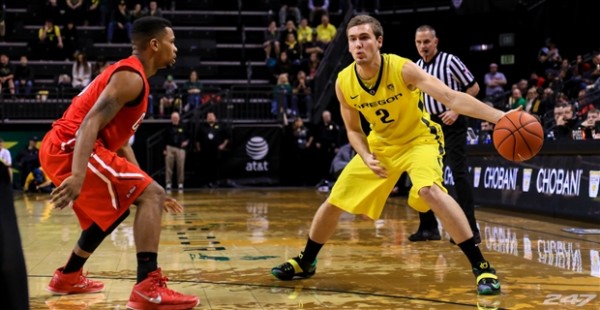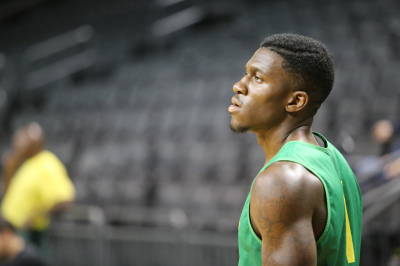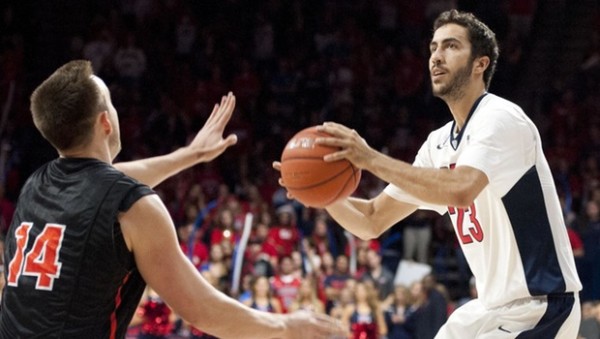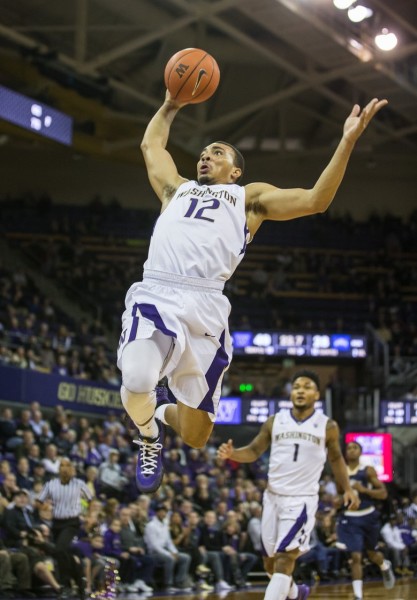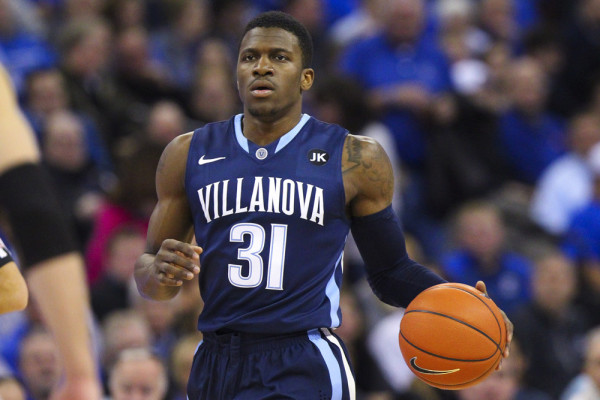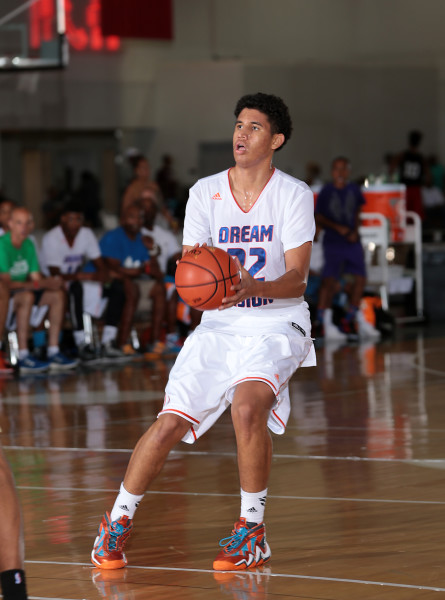The ABCs Of Why Oregon Is A Final Four Contender
Posted by Mike Lemaire on February 11th, 2016We’ve been wanting to write about Oregon since the Ducks beat Arizona in Tucson two weeks ago, but coming up with new angles to discuss how good Dana Altman’s team has become is tricky. For the first time since Altman took over the program in 2010, the team is starting to garner real national attention. That of course means that most of the stories about the team’s patchwork roster and intriguing backstories have already been told. Still, the Ducks deserve all the publicity and attention they can get and we on the microsite have been severely lacking in that department, so we decided to make up for it. Rather than regurgitate observations that have already been analyzed to death, though, we instead used the entire alphabet to explain why the Ducks are legitimate Final Four contenders.
Note: This was not as easy as it might look, so we are asking for forgiveness on some of our more obvious reaches.
A is for Altman: It wasn’t very long ago that Oregon was in the middle of an ugly sexual assault scandal and some were calling for Altman’s job. Now he is coaching the best team in the conference and is in consideration for several national coaching awards as well. He gets plenty of criticism for his continued reliance on transfers, especially those from junior college, but players like Chris Boucher, Dwayne Benjamin and Elgin Cook are silencing those critics. He has also made a concerted effort to make his team adaptable and that shows in his willingness to switch up defensive schemes and tinker with lineups. It has all come together this season and now we are watching Altman’s vision come to life.
B is for Blocks: The Ducks do a lot of this, as they are tied with St. John’s for the second-highest block percentage in the country. That elite rim protection is a big reason why Oregon is way more efficient on the defensive end of the floor this season. Boucher leads the country in blocks per game (3.4) and it would be foolish to forget that sophomore Jordan Bell – who is finally rounding into form – was the conference’s best shot-blocker last season.
C is for Canada: Altman and Oregon have been luring players from north of the border to Eugene for years now (remember Jason Calliste and Devoe Joseph?) but recently he has outdone himself. Ontario native Dillon Brooks is on the short list of PAC-12 Player of the Year candidates, while Montreal product Boucher may be the team’s best NBA prospect. The Ducks’ Canadian flavor would grow even stronger if Dylan Ennis, another Ontario product, were healthy.
D is for Dillon: Brooks has always been considered a good player but the sophomore has raised both his game and draft stock this season. Oregon has made a conscious effort to run its offense through the versatile Brooks, and he’s responded by averaging 16.9 points per game, shooting 48% from the floor, and grabbing 6.0 rebounds per game. He also averages 3.2 assists per game and shoots 80 percent from the free-throw line. He is still a limited shooter from three-point range and can be sloppy with the ball, but the Ducks wouldn’t be nearly as good as they are now if Brooks wasn’t in the midst of a breakout season.
E is for Ennis: The very definition of a college basketball journeyman, Ennis was supposed to use his last year of eligibility to run the Ducks’ offense this season. Instead, a lingering foot issue sidelined him for the rest of the season. He’s likely played his final minute of college basketball, as the NCAA is expected to reject his appeal for a medical redshirt. But rather than sulk or drop out of school, Ennis has been front and center as the team’s biggest cheerleader. That type of support and loyalty can make subtle, crucial differences in team morale.
F is for Frontcourt: The loss of Ennis has left a gaping hole in the depth of the team’s backcourt, but Oregon makes up for it with a frontcourt that may feature the best grouping of five forwards in the country. Boucher and Brooks need no further explanation, but Bell is a defensive monster who is still shaking off the rust from missing the first portion of the season. Senior Dwayne Benjamin isn’t a great rebounder but makes up for it with his floor-stretching shooting talents, while fellow senior Elgin Cook is the perfect swing forward, capable of filling in wherever necessary. Oh and don’t think Cook is just a role player; he is currently Oregon’s second leading scorer.
G is for Gimmes: The importance of succeeding at the free-throw line can never be understated. While the Ducks are shooting six percent worse from the charity stripe this season than they did last (76 percent has come down to 70 percent), the percentage of free-throw attempts in relation to field-goal attempts has risen sharply, from 28 percent to 40 percent. Oregon is getting to the free-throw line far more often, which is a big reason why the offense has been able to overcome its long-range shooting issues. If anything, it might be worth trying to get to the line even more often.
H is for Homecourt Advantage: Here’s the first letter that demanded a real stretch! Considering the Ducks play in a 12,000-seat arena and can barely muster an average of 8,000 fans for conference home games, the fans may not deserve too much praise. But the crowd is starting to come back (with an assist from the school athletic department) and the team is noticing and responding. The Ducks have yet to lose in Eugene and with just three manageable home dates remaining on the schedule (vs. Oregon State, Washington, and Washington State), it doesn’t seem likely they will this season.
I is for Idolization: The second stretch of the piece! But idolization is a pretty good word for Ducks’ guard Casey Benson‘s fascination with watching his brother play. The elder Benson (T.J.) played at Weber State and now coaches at Grand Canyon University, so the younger Benson had a pretty good mentor to learn from. The younger Benson is one of the best decision-makers in college basketball and has become an unexpected linchpin in one of the nation’s most efficient offenses.
J is for Jumpers: Oregon makes a fair amount of them (its 53.3 percent shooting on two-point field goal attempts is best in the conference) and last we checked, making shots is an important part of becoming a good basketball team.
K is for Knight: It is pretty near impossible to mention the success of Oregon athletics without pointing out that a big part of that success is Nike chairman Phil Knight’s deep pockets and profound love for the school’s sports teams. Matthew Knight Arena is a gleaming testament to both Phil’s son and his own generosity. It may also be the coolest court in college basketball.
L is for Luck: According to hoop-math.com, opponents took 418 field goals in transition against Oregon last season and roughly 38 percent of those attempts came from downtown. Opponents made just 30.8 percent of those shots. This season, opponents have taken 255 field goals in transition (basically the same per game average as last season) and once again roughly 38 percent of those attempts have come from downtown. Opponents are now making 44.4 percent of those attempts, however. Oregon can definitely stand to tighten things up in that area, but that number screams regression. If and when that luck runs out, Oregon’s already solid defense might start looking even more efficient.
M is for Mennenga: As in assistant coach Mike Mennenga. Mennenga is in his second season as an assistant in Eugene but his strong ties to Toronto (he used to be a youth basketball coach there) are a big reason why Oregon is so popular with players from up north. We already explained how important Canada has been to Oregon’s success this season, so it is only fair we give Mennenga his due, as well.
N is for Newcomers: Since Altman took over for Ernie Kent, the roster has seen an average of nearly eight new players each season. This season isn’t the best example of the constant turnover – in part because we never got to see Ennis play extended minutes – but at the risk of sounding redundant, Boucher and Dorsey have worked out pretty well. It takes a gifted coach and stable program to successfully integrate new players year after year. Oregon does it better than almost anyone else.
O is for Opportunity: At the risk of being a buzzkill, it is worth pointing out that there are no dominant teams in college basketball this season. This leaves a very large open window of opportunity for Oregon (and every other team out there) to climb through. If this were last season, Oregon might not even be the first or second best team in the conference, let alone the country. This is nothing to be ashamed of, but let’s not pretend it doesn’t have a big impact on Oregon’s potential tournament success.
P is for Playing Time: Ducks’ freshman Tyler Dorsey was originally committed to conference rival Arizona. But when Arizona took a commitment from Justin Simon and offered other guards, Dorsey knew his potential playing time was in jeopardy and reopened his commitment before eventually landing at Oregon. Playing time was unlikely to be the only reason Dorsey made the switch, but the point is moot now. Dorsey is suiting up for Oregon and is the team’s third-leading scorer and best outside shooter, shooting better than 40 percent from three-point range.
Q is for Quack: You know, like a Duck?
R is for Reckless: One would think that a rotation primarily comprising first or second year players would be more reckless. But in fact the opposite is true, as Oregon takes better care of the ball than almost any team in the country. Casey Benson has turned the ball over just seven times in more than 300 minutes of conference play and Boucher has just nine turnovers in nearly as many minutes. The Ducks lead the conference in turnover margin (+2.88) and are 26th best in the country in the category (ninth best among Power 5 schools).
S is for Stubblefield: As in longtime Altman sidekick and ace recruiter Tony Stubblefield. Hired away from Cincinnati, Stubblefield has been the program’s best recruiter and is at least partially responsible for the commitment of Dorsey last year. He was also the primary recruiter of Oak Hill Academy forward Trevor Manuel, and 247 Sports credits him with successfully enrolling Cook and Brooks in years past.
T is for Transition Defense: Oregon opponents’ effective field-goal percentage in transition is 58.5 percent. This is in part due to the aforementioned problems defending the three-point arc, but what might be news to some is that Oregon ranks among the top 40 teams in the country in percentage of total field goals attempted in transition (18.3%) and effective field-goal percentage defense in non-transition situations (44.4%). In summation, Oregon is good at preventing opponents’ transition opportunities and is really good at defending when the opponents aren’t getting transition opportunities. This is a reminder to Dana Altman to get that transition perimeter defense cleaned up STAT.
U is for Unicorns: Unicorn was the most apt description for the type of once-in-a-generation talent and athlete Kevin Durant was and still is. Now it is being used, albeit slightly more moderately, to describe the 6’10”, 190-pound athletic freak that is Chris Boucher. There aren’t too many players in college basketball with the versatility to block seven shots and make four three-pointers in the same game. Boucher did it against Arizona State on Jan. 31. He is 23 and is essentially a walking string bean, but his arrival has been an obvious boon on both ends of the floor for the Ducks.
V is for Versatility: And versatility is something Oregon has in spades. Take a look at Oregon’s most frequently used lineups over the last five games and you will see Altman experiments with different combinations liberally. Every player in the rotation also plays more than one position. This is not coincidental. Altman readily admits that versatility is an important part of his recruiting strategy and that position-less basketball is the aim. Almost all of the Ducks are matchup problems for the opposition (especially Brooks) and that ability to play different roles is a big reason why the offense is so efficient.
W is for Warriors: To continue that thought, we won’t pretend the Ducks’ attempts to mimic the Warriors’ position-less defense is perfect. Oregon still has issues on the glass and defending the perimeter. But it is interesting to see how many similar pieces Oregon is working with. This excellent analysis of the Warriors’ ground-breaking defense can be applied to Oregon as well (to a lesser degree, obviously). The Ducks have no defensive footprint and can play man-to-man or zone depending on what suits them. They can switch on defense without worrying about size mismatches with Boucher serving as the Bogut-esque anchor. Brooks also has the potential to be an Iguodala-lite disruptor on defense. These similarities may not be perfect, but their potential existence is a definite good thing.
X is for X: This is one of those skip questions on the test and we will take the “X”.
Y and Z: Uhhhh, seems like we ran out of gas. We got nothing. Dana Altman has to hope his team has a more successful finishing flourish in them this March than we did here. And if you read all the way from A through W, you know the Ducks just might.































